SMITHSONIAN LIBRARIES AND ARCHIVES
Taking Vintage Library Shelving for a Spin
A late 19th century library supply catalog provides a glimpse into how libraries might have dealt with space issues over a century ago
/https://tf-cmsv2-smithsonianmag-media.s3.amazonaws.com/filer_public/26/da/26dafd0f-810d-48b1-b103-e6d39a2b7e2f/library-bureau-classified-header.jpg)
It seems as if libraries have always had the challenge of shelving more books in less space. How did libraries in the late 19th century deal with space constraints? One possibility involves motion.
This trade catalog is titled Classified Illustrated Catalog of the Library Bureau (1894) by Library Bureau. It advertises everything from large pieces of furniture such as card catalogs to small supplies like fountain pens. On the title page, the catalog is referred to as “A handbook of library and office fittings and supplies.”
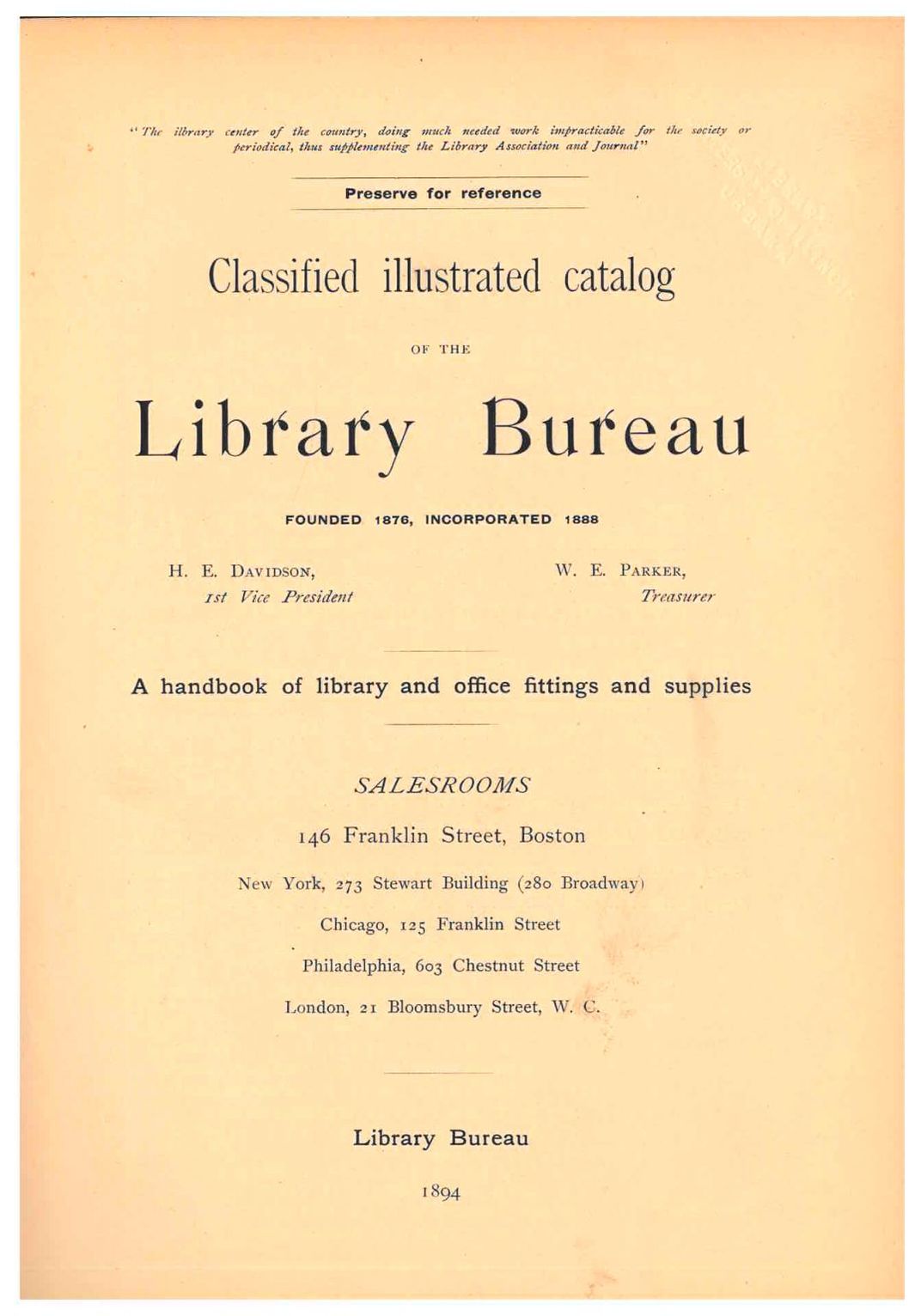
One piece of furniture featured is the revolving bookcase. It might not be the first thing that comes to mind when dealing with limited space, but it does offer ideas for creating extra space. There are two types of revolving bookcases described in this catalog, the Danner Revolving Bookcase and the Sargent Rotary Bookcase.
The Danner Revolving Bookcase was available in several styles. Each provided a slightly different amount of shelving space, but all shared the same basic principles. Shaped like a column with books shelved on all four sides, it revolved with just a simple touch of the hand. The catalog mentions that people have asked if a round bookcase revolves in a smaller amount of space than a square bookcase with projecting corners. According to this catalog, a square bookcase forms “a solid column of books, and nothing more compact is possible.”
Besides shelving books upright, Danner Revolving Bookcases also included space to shelve oversize items lying flat. This might be on a completely open top shelf or an “open deck” which was an upper shelf with four open sides. As illustrated below (bottom), some bookcases included both.
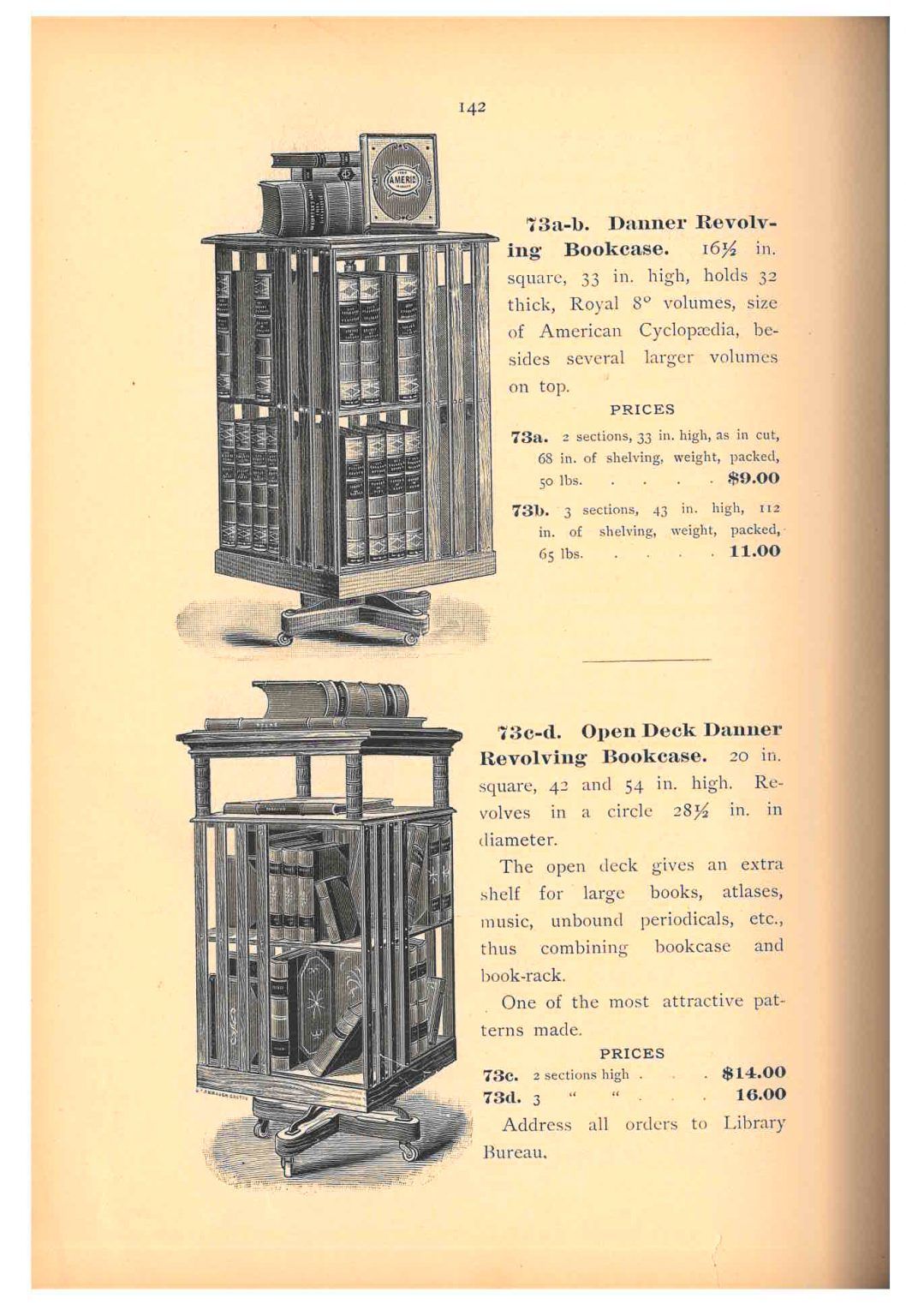
Shown below is the Standard Danner Revolving Bookcase. It was constructed of antique oak, natural cherry, or walnut wood. The catalog labels the different versions as 73h-k, and each one provided varying amounts of shelving space. These bookcases had two to five sections, or tiers, of shelving.
Each section, or tier, consisted of four shelves which wrapped around the bookcase covering all four sides and providing a total of 56 inches of space in each section. Each shelf was 10 inches high except for the bottom shelves which were 12 inches in height.
Hundreds of books could be shelved on these revolving bookcases and then the bookcases placed in an out-of-the-way area while remaining accessible with just a quick spin. As the catalog explains, “Two cases behind a study chair are out of the way, but bring within instant reach of the hand 400 volumes of books, or their equivalent in other objects.”
According to this catalog, bookcase 73j was tested by filling only one side with 180 pounds while the other three sides remained empty. Even with the disproportionate weight, the bookcase revolved just as well after two months of testing as it did before the test.
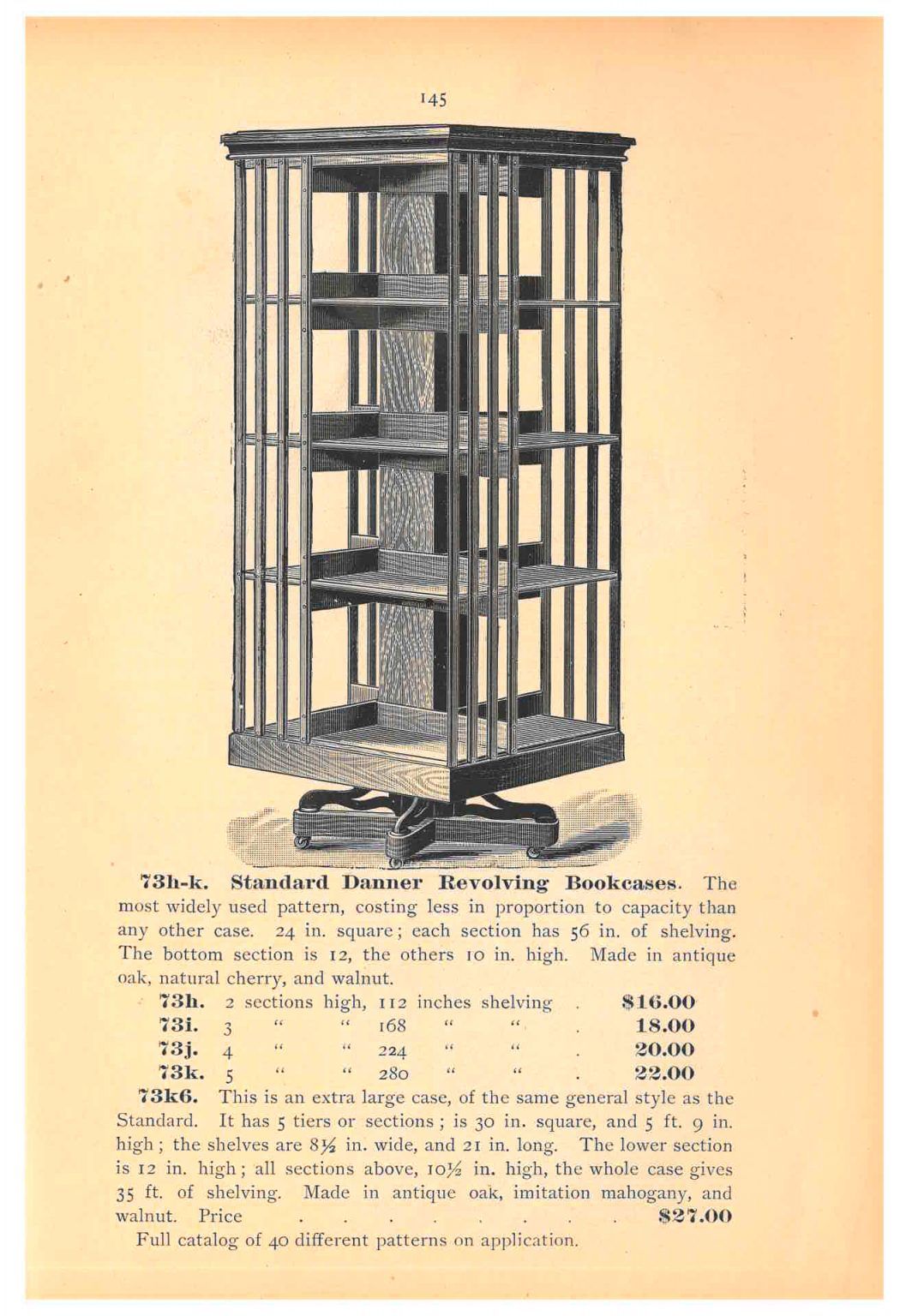
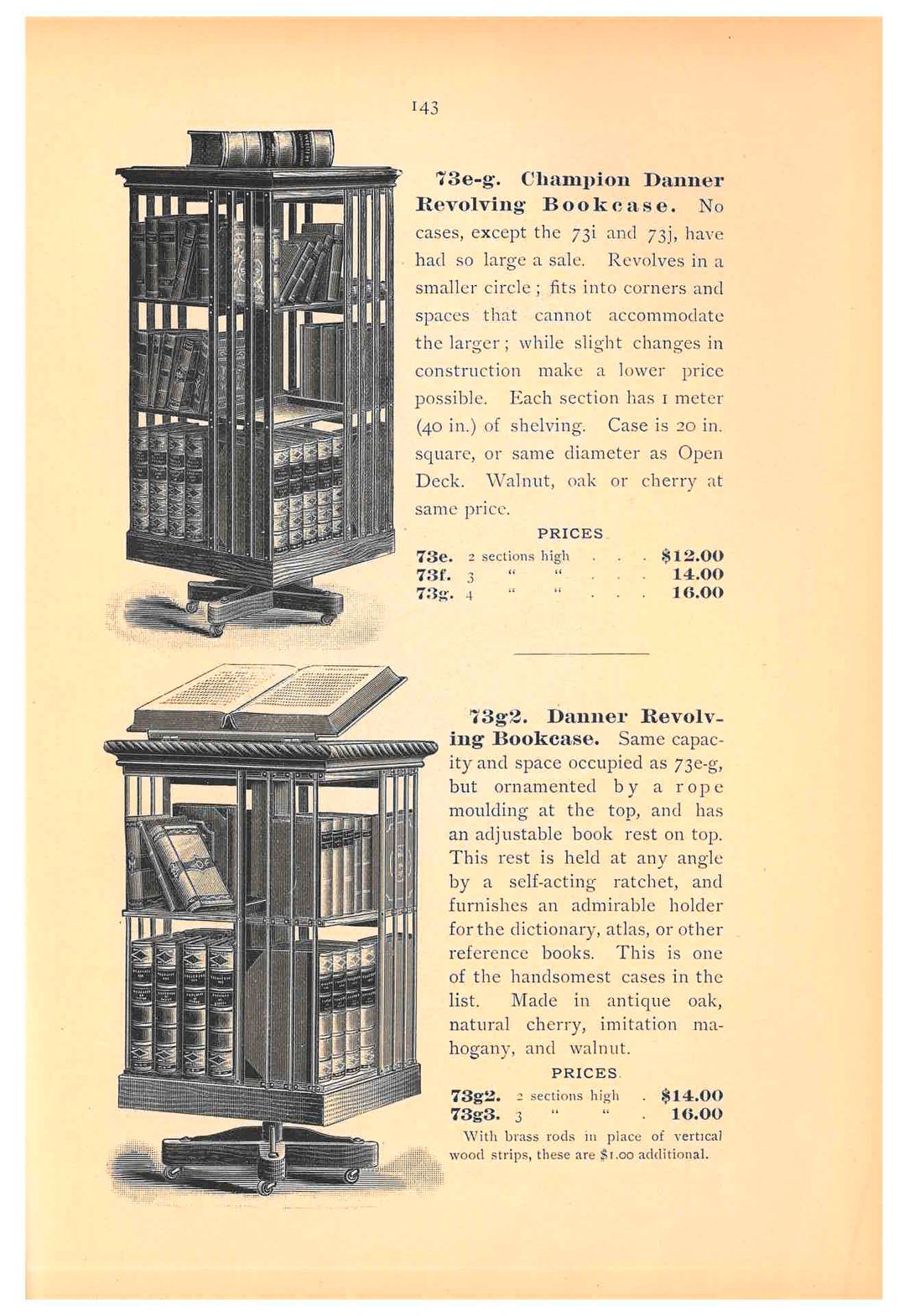
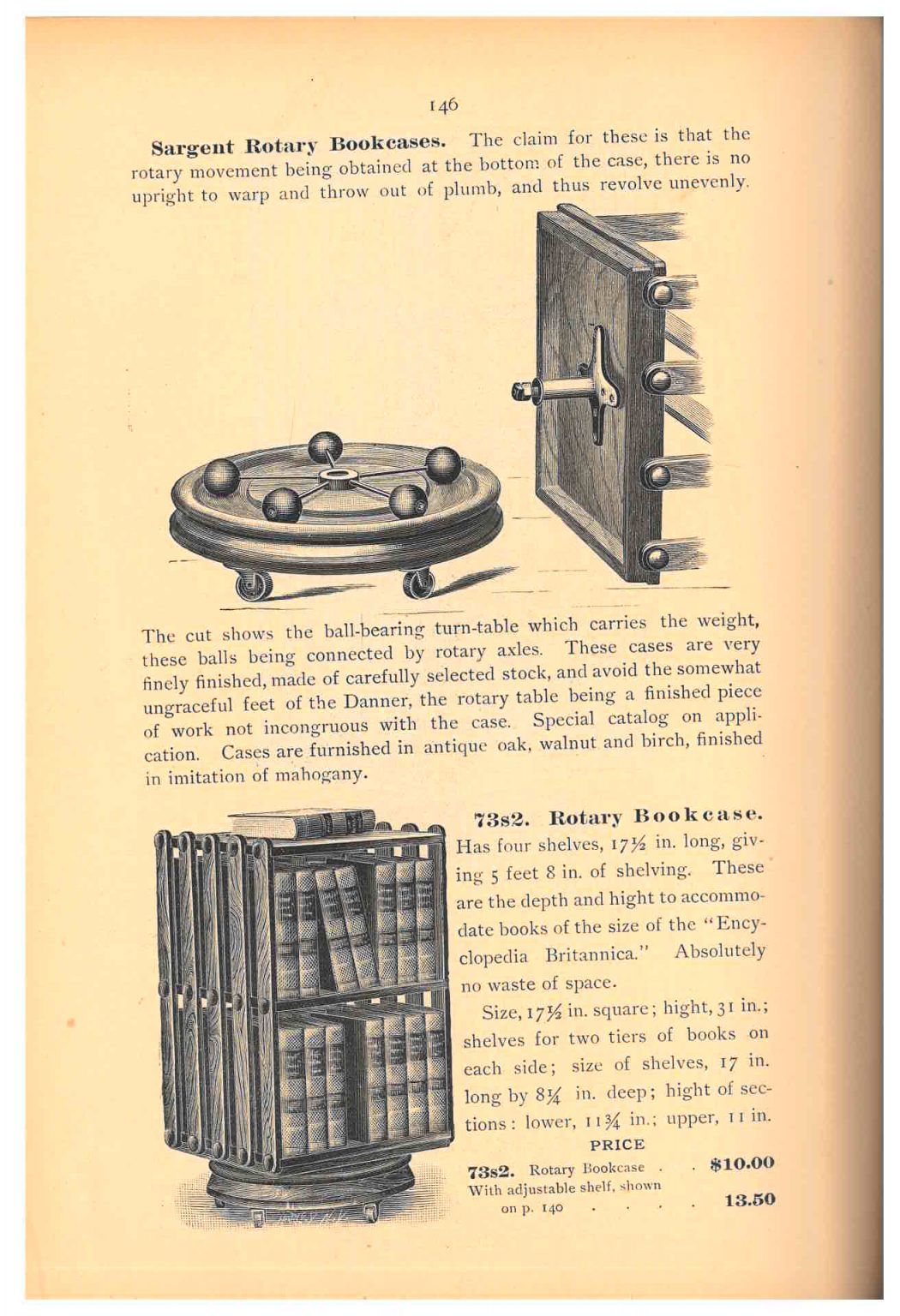
Just like the Danner Revolving Bookcase, these Rotary Bookcases were available in a variety of sizes. Bookcase 73s4 (below, bottom) consisted of a total of nine shelves. This provided a total of eight feet of shelving. Four of the shelves measured 20 inches each and were placed on opposite sides of the bookcase, so that two shelves were on each of those opposite sides. These shelves ran the full width of the bookcase.
Every bit of space was used. This included the small amount of space on the other two sides of the bookcase, located between the backs of the four full-width shelves. As shown in the illustration below (bottom), the two remaining sides held four shorter shelves. The ninth shelf was an open shelf on top of the bookcase. This was a convenient spot for shelving oversize books lying flat.
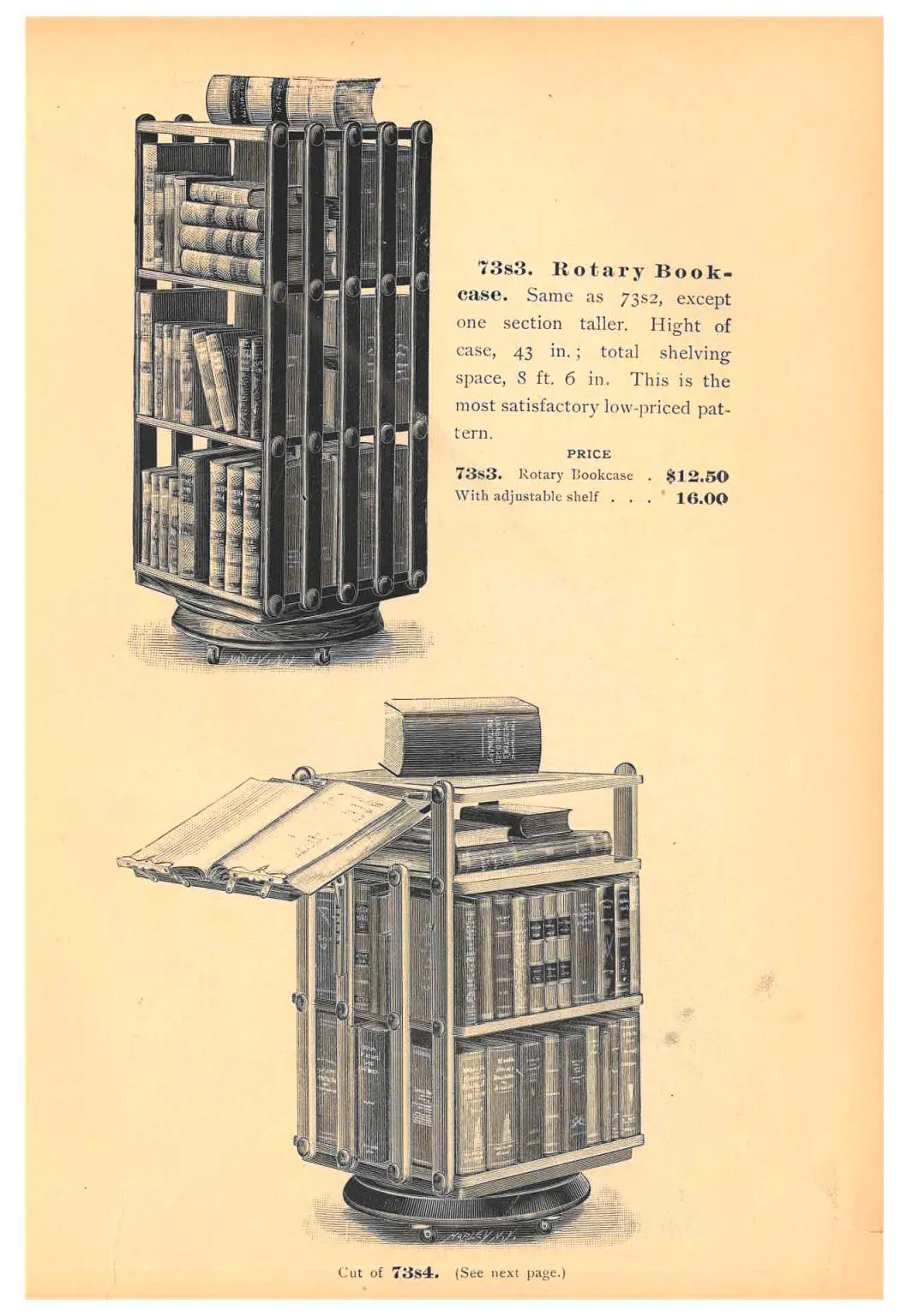
The adjustable shelf attachment (above, bottom) was a conveniently placed option for users who needed extra space to consult a book or a place to write. It was adjustable to any angle and did not interfere with retrieving books. However, it also provided a shelf extension. If adjusted to a position level with the top of the bookcase, it provided additional space for oversize books by extending the top shelf. Though revolving bookcases may not initially appear to create large amounts of extra space, every inch helps!
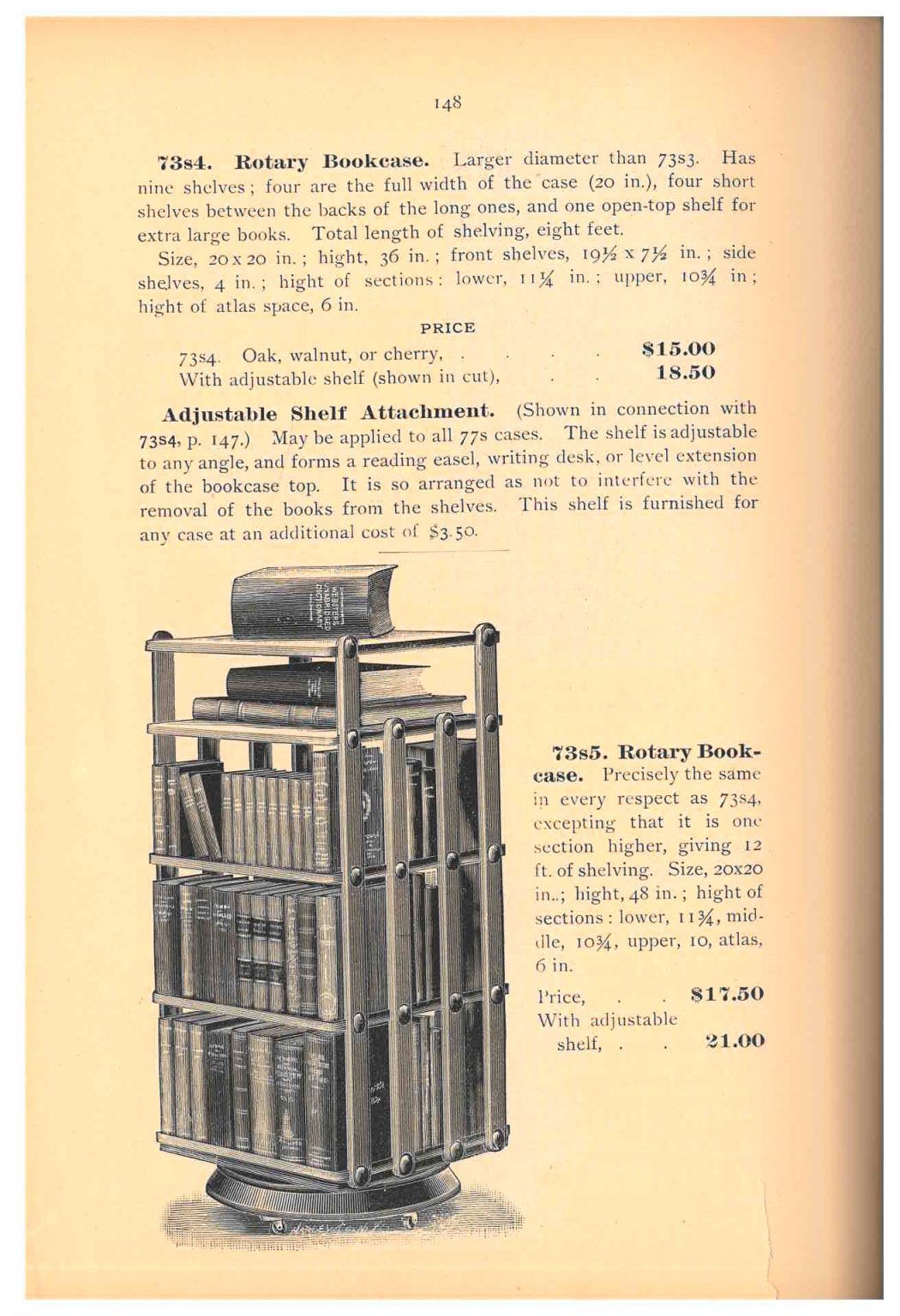
Classified Illustrated Catalog of the Library Bureau (1894) and other trade catalogs by Library Bureau are located in the Trade Literature Collection at the National Museum of American History Library. Interested in more revolving bookcases from the late 19th Century? Check out another style in this post about the Yost Consolidated Revolving Circular Bookcase.

